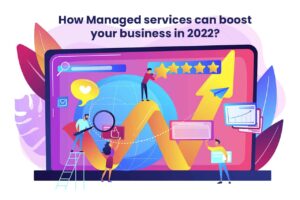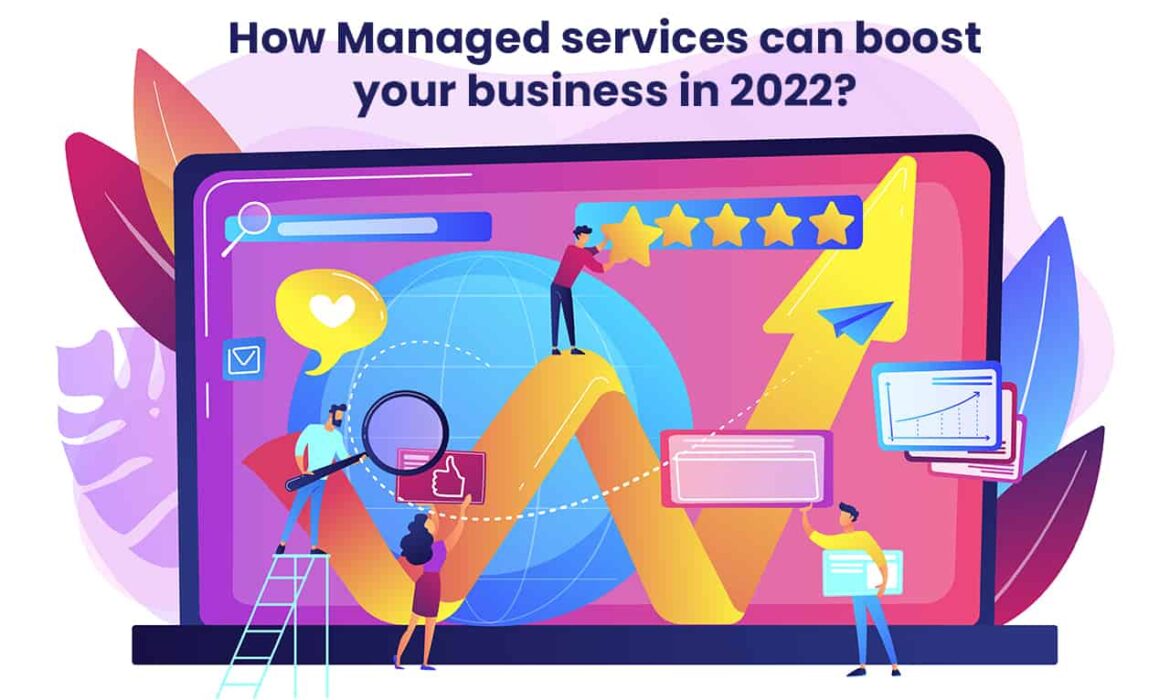
Managed Network Services
The Covid-19 pandemic that forced a sudden lockdown across the globe expedited the digitalization of business operations and remote networks. This trend resulted in search for qualified IT professionals and the best technologies and services. While the dearth of qualified IT professionals posed a big challenge, dynamically changing technologies forced organizations to frequently update/change skillset and toolstack requirements. After going through the tedious hiring process that is burdened with insurance, labour laws and other perks, you don’t want to see a change in the technology that requires a different set of skills. This is where managed services come to the rescue.
Managed services is about outsourcing regular business operations to a 3rd party that has competence, skilled professionals and the right tool stack in a specific vertical. With access to a dedicated IT team 24/7, organizations can seamless perform business core operations without worrying about technical issues.
While every IT-related service can be outsourced, the most common managed services include managed software services, managed cloud services, managed network services etc.
Managed Cloud Infrastructure
Adapting cloud-native platforms is a key IT trend in 2022. Modern cloud-native architectures comprise container clusters deployed at rapid speeds. With dynamically changing infrastructure configurations, it is a challenge for administrators to keep a tab on change management. Infrastructure as Code (IaC) is a popular technology trend that is gaining momentum in 2022. Using IaC tools such as Terraform and CloudFormation, organisations can define infrastructure as code and thereby convert infrastructure into software. As such, software development best practices can be applied to infrastructure as well. With IaC and automation, organizations can seamlessly deploy and manage infrastructure resource provisioning. While all this looks good on paper, it requires expert knowledge to leverage this trend. MSPs possess these capabilities to keep you ahead of the competition.
Managed Network Services Leveraging 5G Technology
5G technology is becoming mainstream in 2022. The 5G technology enables organizations to virtualize software-defined networks and run them on commodity hardware. Each network function can be virtualized and packaged into a container As such, organizations can develop services as network functions and package them into containers. Container clusters are managed by container orchestration tools such as Kubernetes. Instead of investing heavily in infrastructure and IT professionals, organizations can outsource telecommunication services to an MSP to save costs while significantly improving operational efficiencies.
Leveraging IoT Networks
The rapidly evolving IoT technology boosted by the cloud, AI and 5G advancements provides a great opportunity for telecoms to create and manage IoT networks accommodating thousands of devices that communicate with higher speeds, lower latencies and are energy efficient. As telecoms possess the required infrastructure, they can easily leverage the 5G network capabilities. As 5G is still in the nascent stage and there are limited options in the form of customizing public IoT cloud or building an IoT platform from scratch, not many organizations have the required expertise and skillsets to optimize this technology. This is where MSPs can take over.
Managed Software Services
Software as a Service (SaaS) is a popular deployment model of cloud services where the software is hosted by the provider and delivered to the client over the Internet via a pay-per-use subscription model. Despite SaaS is an easy to use model, organizations use hundreds of tools and services that lack centralized management. Security and network configurations should be taken care of. Managed software services take this service to the next level by adding hardware and networking support. As such, organizations enjoy higher scalability, stability, predictability and security while optimizing cloud costs. For organizations that develop custom software, MSPs help you throughout the software application lifecycle.
The Bottom Line
Managed service providers bring a large plate of benefits to the table. Firstly, MSPs eliminate the need to install, configure and manage robust infrastructure containing a lot of moving parts. By placing the infrastructure responsibilities on the MSP, you can save huge costs as well as precious time. Secondly, MSPs offer the best tool stack that is always updated. As such, you can work with world-class technologies and compete with large enterprises without shelling out huge money.



